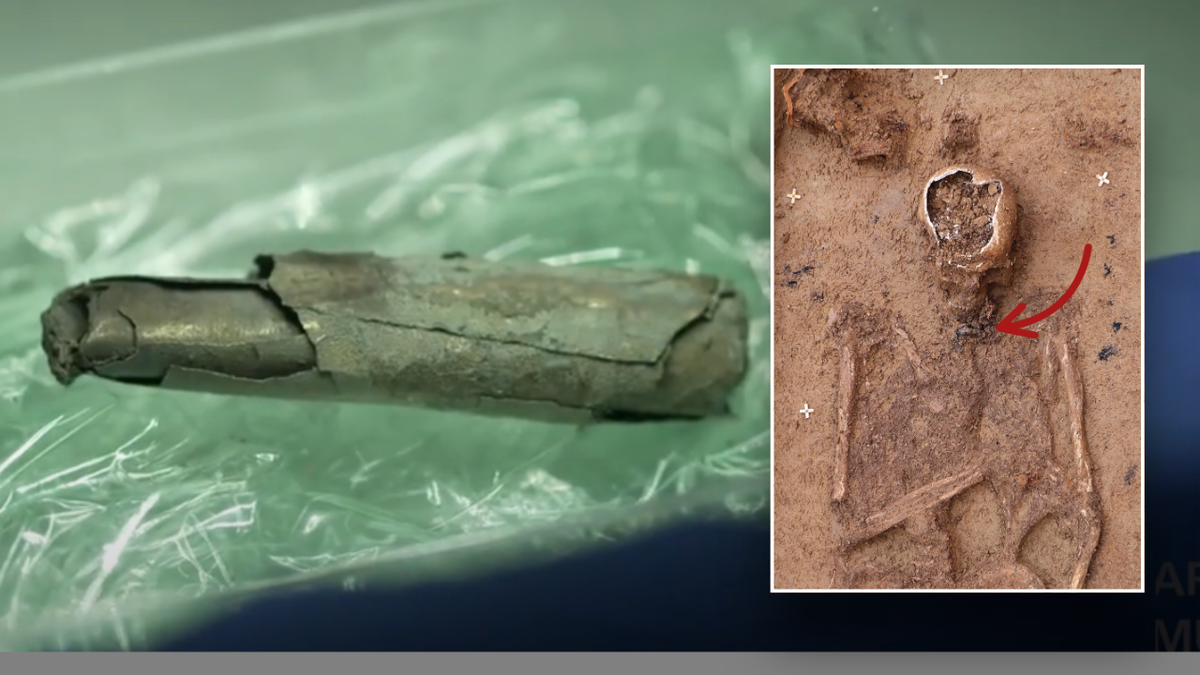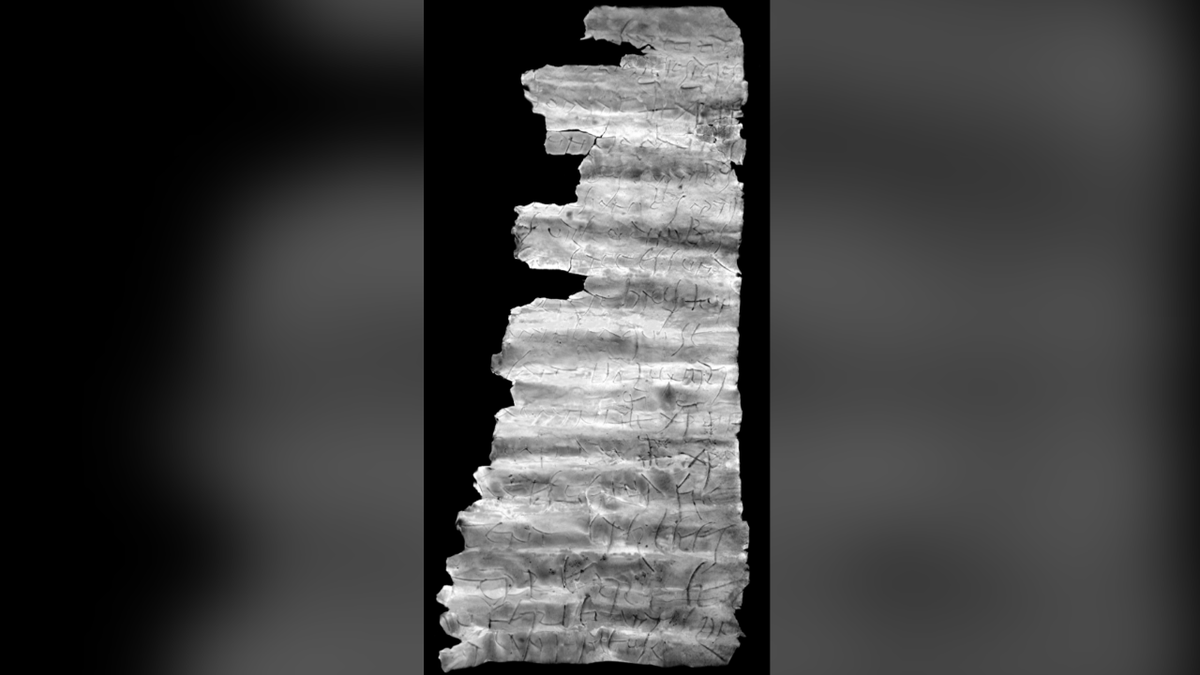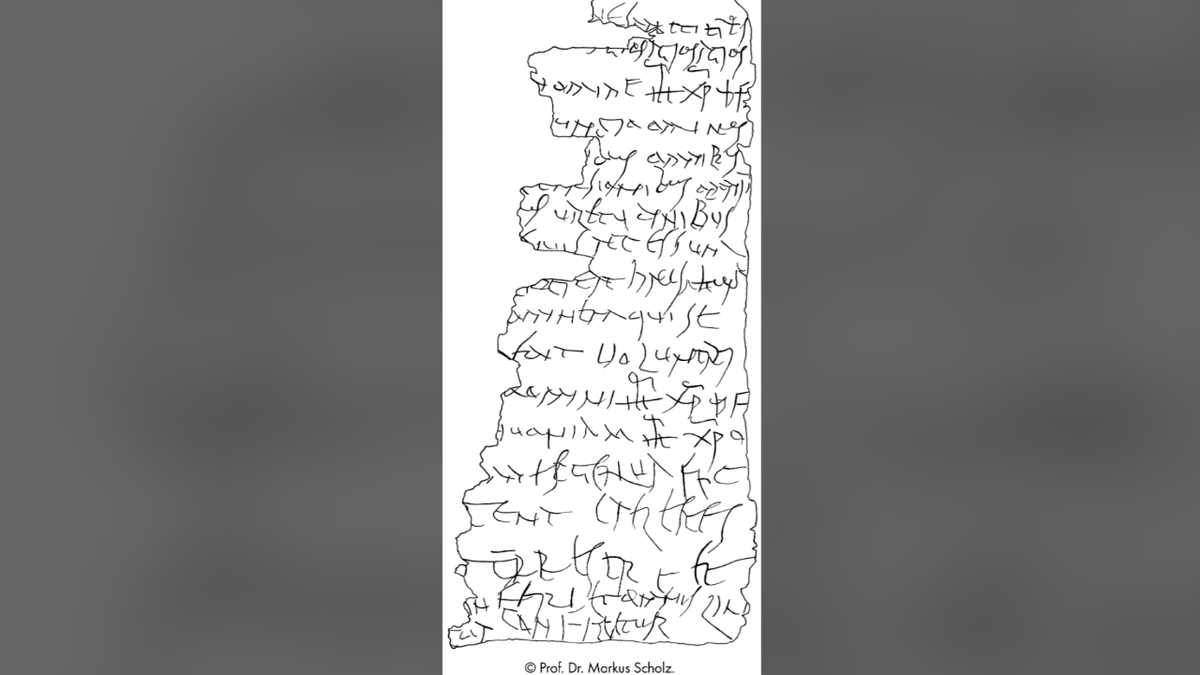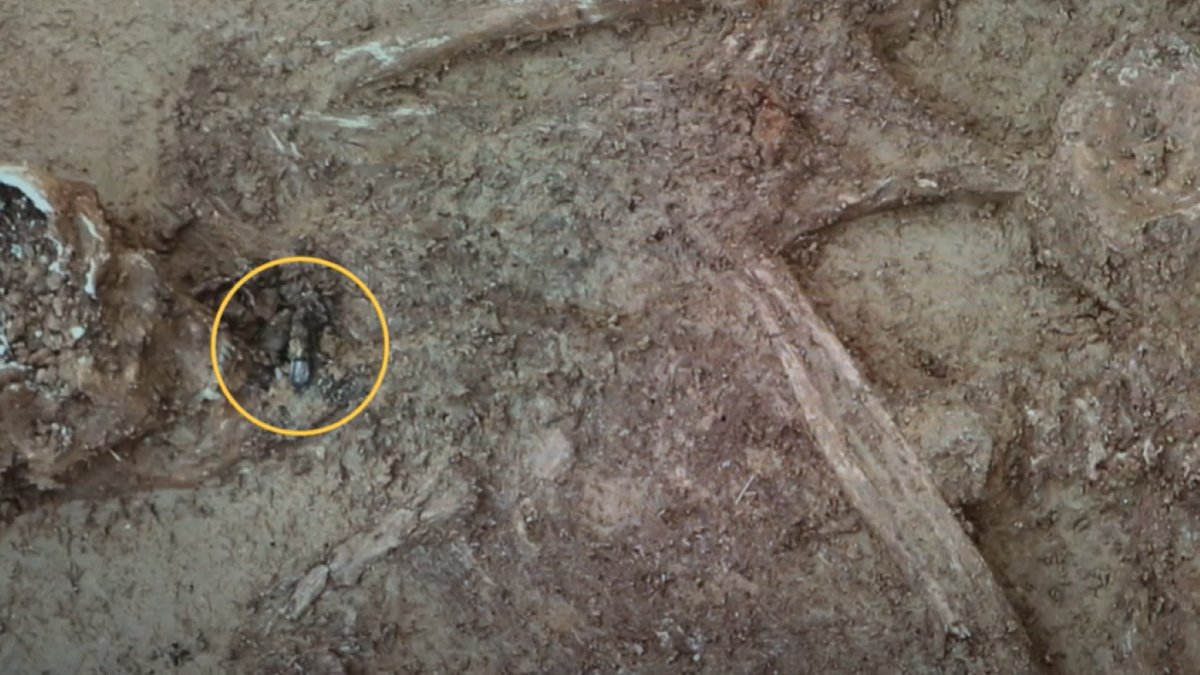[ad_1]
The earliest recognized proof of Christianity north of Italy was not too long ago unveiled by archaeologists, who name the invention one of many “most necessary testimonies of early Christianity.”
The artifact, publicized by the Frankfurt Archaeological Museum final week, is known as the Frankfurt silver inscription. Found in 2018, the inscription has been analyzed and studied for years earlier than lastly being launched to the general public this month.
The Frankfurt silver inscription is an engraving on silver foil that consists of 18 traces written in Latin. It dates to between 230 and 260 A.D. and was found wrapped in a small silver amulet.
In a press launch translated from German, the museum defined that the artifact was present in a third-century grave in Hesse, Germany, in what was as soon as the previous Roman metropolis of Nida. The inscription begins, “Within the identify of Saint Titus, Holy, holy, holy! Within the identify of Jesus Christ, God’s Son!”
ARTIFACT WITH STRANGE INSCRIPTION DUG UP AT HOLY SITE IN JERUSALEM: ‘UNUSUAL LOCATION’

Consultants not too long ago decoded and launched the earliest proof of Christianity north of the Alps present in a third-century grave. (Frankfurt Archaeological Museum)
Saint Titus was a first-century Christian missionary and disciple of Paul the Apostle. The inscription additionally requires the amulet to guard “the person who offers to the desire the Lord Jesus Christ, God’s Son.”
“The heavenly, the earthly and the underground, and each tongue confess (to Jesus Christ),” the textual content concludes.
Written in Latin, the inscription took a number of weeks to decipher on account of its deteriorated situation. Archaeologists wanted to “digitally unroll” the silver foil, which had been crumpled for round 1,800 years.
Utilizing computed tomography and state-of-the-art technological gear, the textual content was lastly decrypted in Might. It was then translated over an prolonged time frame.
ARCHAEOLOGISTS UNCOVER ONE OF THE WORLD’S OLDEST CHRISTIAN CHURCHES

The early Christian inscription was written in Latin, which was uncommon on the time. (Frankfurt Archaeological Museum)
“Generally it took weeks, even months, for me to have the subsequent concept,” Goethe College professor Markus Scholz stated of the interpretation course of. “I introduced in specialists from the historical past of theology, amongst different issues, and piece by piece we have now approached the textual content collectively and finally deciphered it.”
Scholz added that the inscription was “very refined” and known as its creator “an elaborate author.”
“It’s uncommon that the inscription is totally in Latin,” Scholz stated. “That is uncommon for this time. Such inscriptions have been normally written in amulets in Greek or Hebrew.”
Not solely is the inscription not written in Hebrew, it does not reference Judaism in any respect, nor does it include any pagan components, which makes it much more distinctive.
CLICK HERE TO SIGN UP FOR OUR LIFESTYLE NEWSLETTER

The silver foil was “digitally unrolled” and translated by specialists. (Frankfurt Archaeological Museum)
“It’s uncommon that there isn’t any reference within the inscription to every other perception in addition to Christianity,” the museum’s press launch added. “Normally till the fifth century, a combination of various faiths can all the time be anticipated with valuable steel amulets of this type. Typically there are nonetheless components from Judaism or pagan influences.”
“However on this amulet neither Yahweh, the almighty God of Judaism, nor the archangels Raphael, Gabriel, Michael or Suriel are talked about, no forefathers of Israel like Isaac or Jacob. And likewise no pagan components like demons. The amulet is solely Christian.”
The press launch known as the artifact “one of the vital necessary testimonies of early Christianity worldwide.”
For extra Life-style articles, go to foxnews.com/life-style.
“To this point, there was no such early, genuine proof of pure Christianity north of the Alps,” the assertion defined. “All [other] finds are no less than round 50 years youthful.”

The silver foil was present in a third-century grave. (Frankfurt Archaeological Museum)
“There are references from historiography to the primary Christian teams in Gaul and maybe additionally within the province of Higher Germania within the late second century,” the assertion added. “Nevertheless, sure proof of Christian life within the northern Alpine areas of the Roman Empire typically solely comes from the fourth century AD.”
CLICK HERE TO GET THE FOX NEWS APP
“These 18 traces, specialists agree, will enormously enrich earlier analysis on the unfold of Christianity and the late interval of Roman rule on the precise of the Rhine.”
[ad_2]
